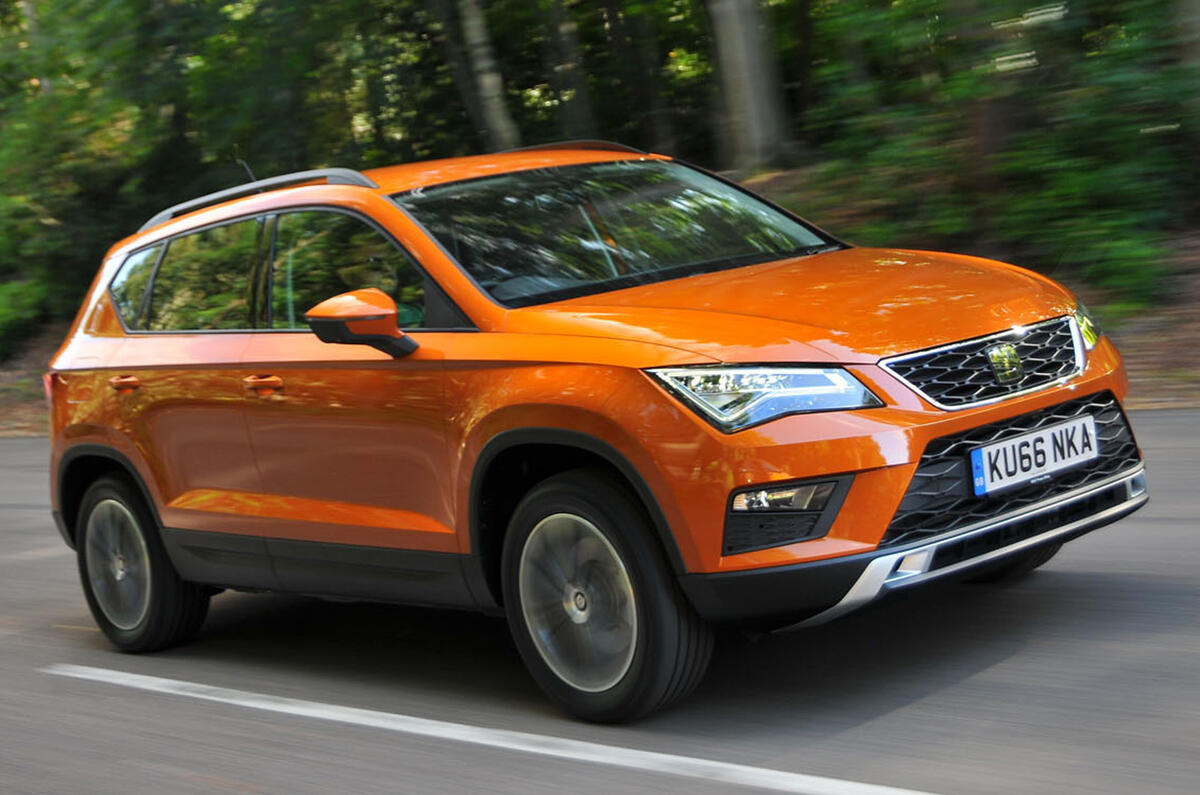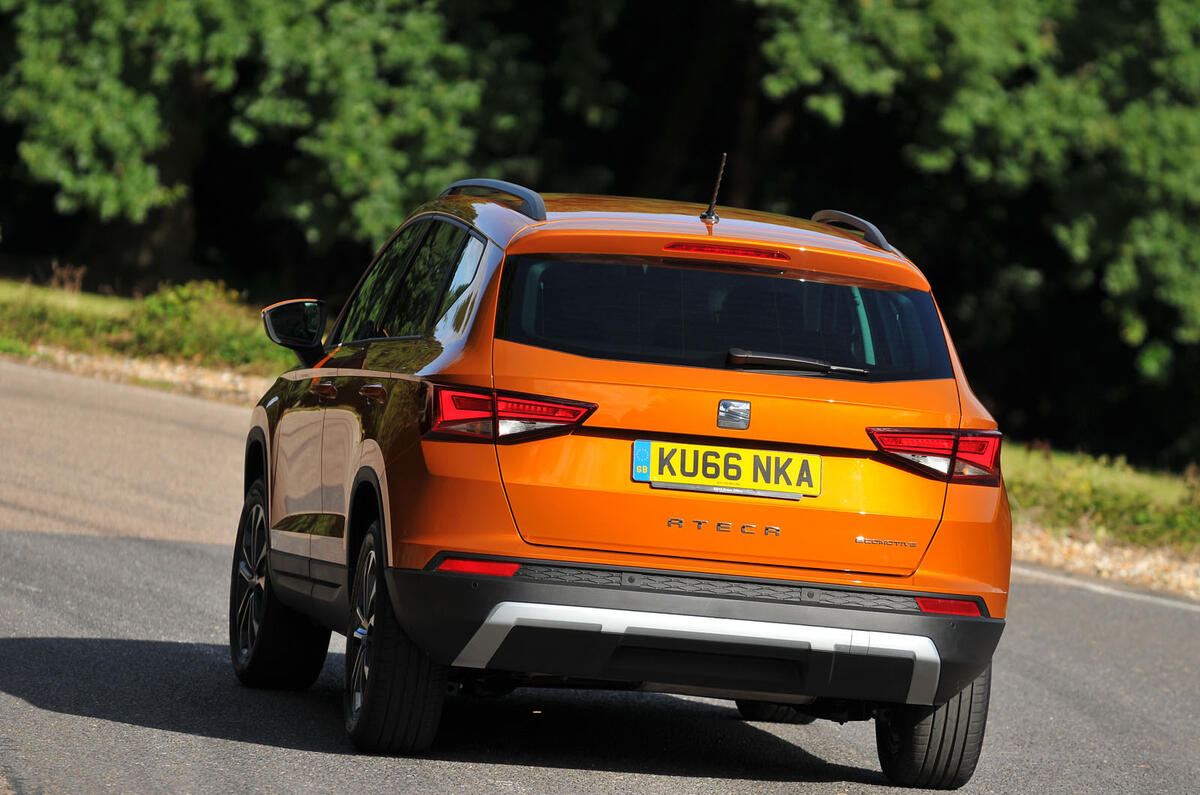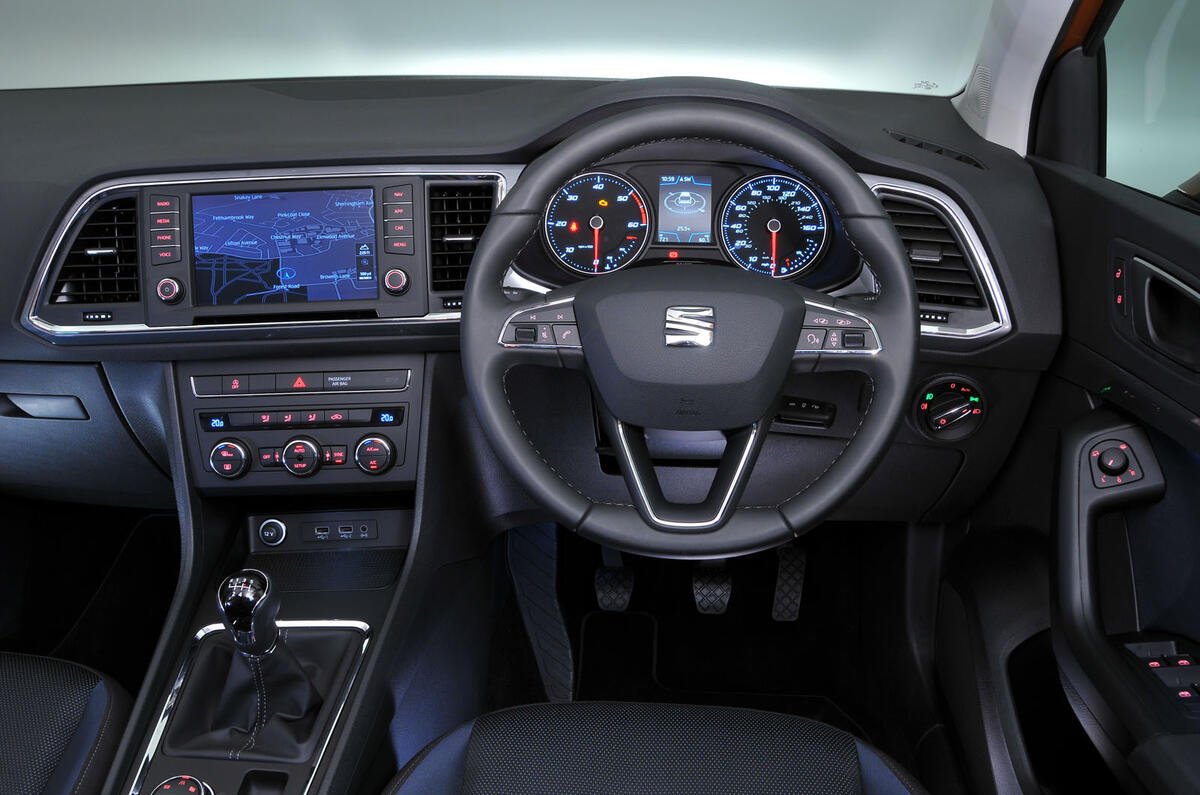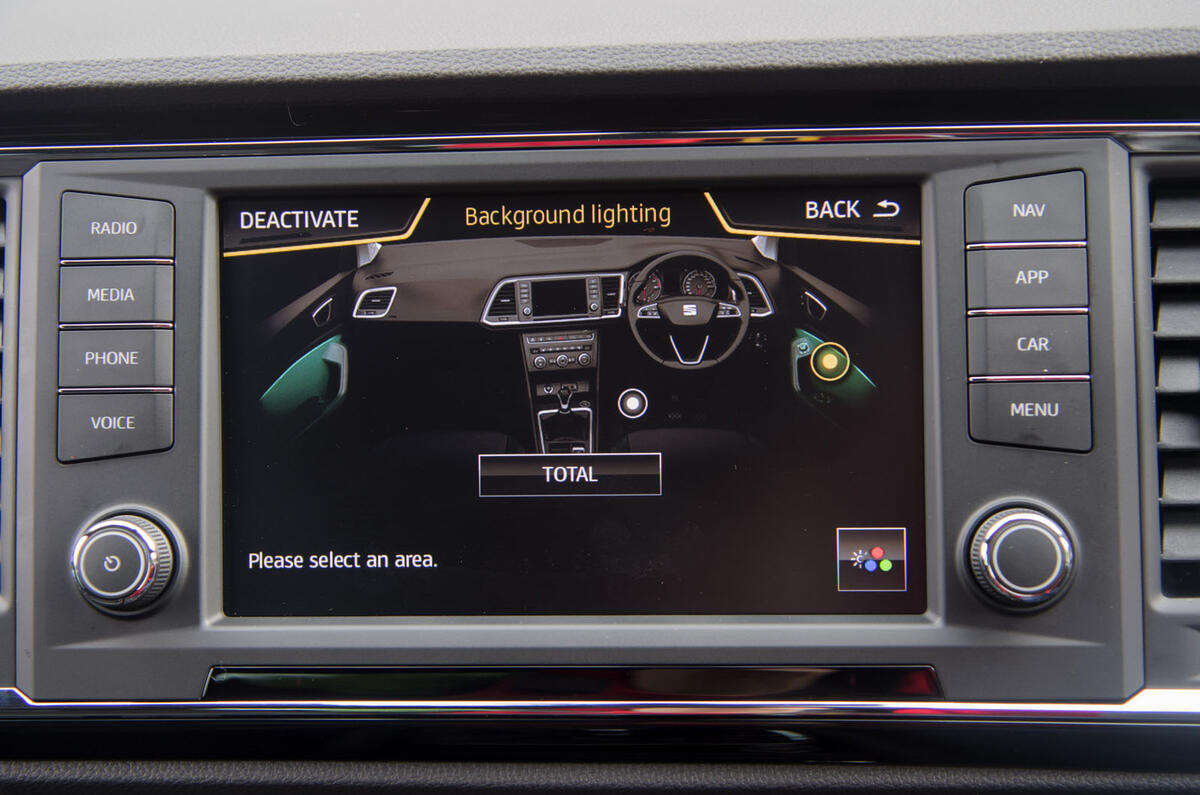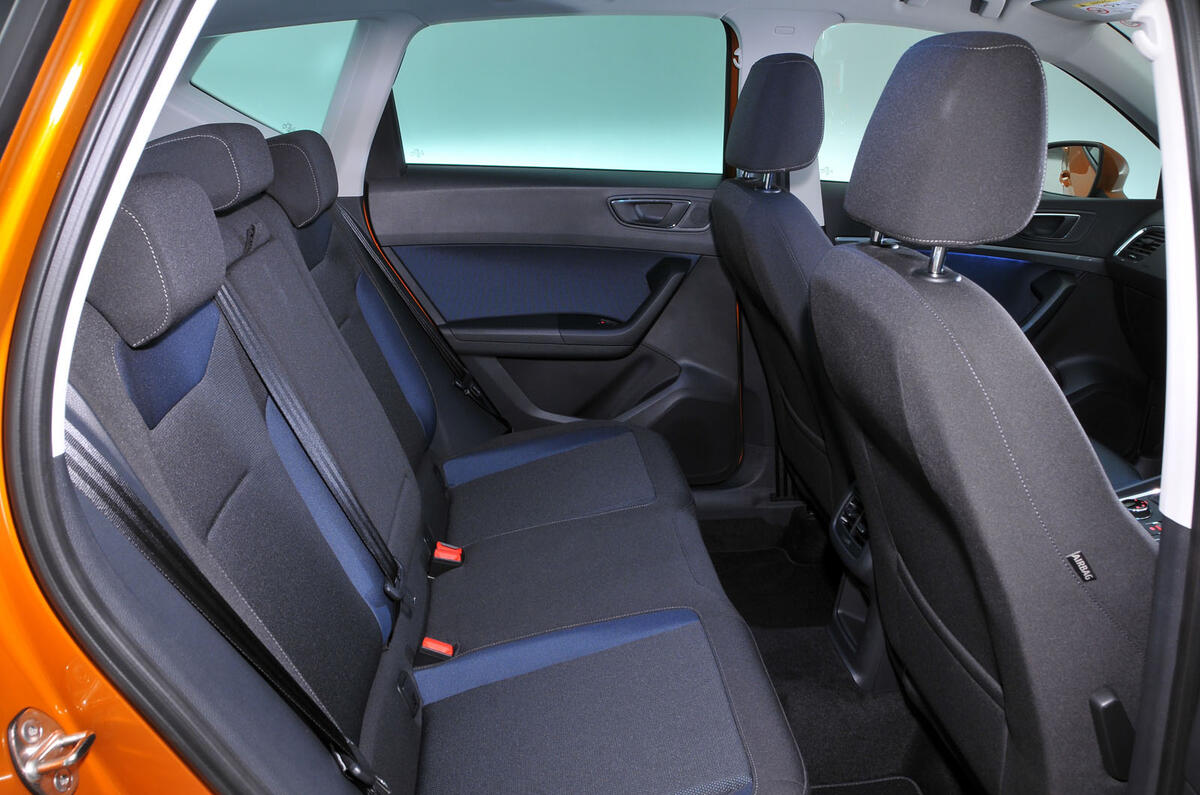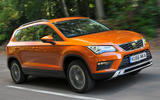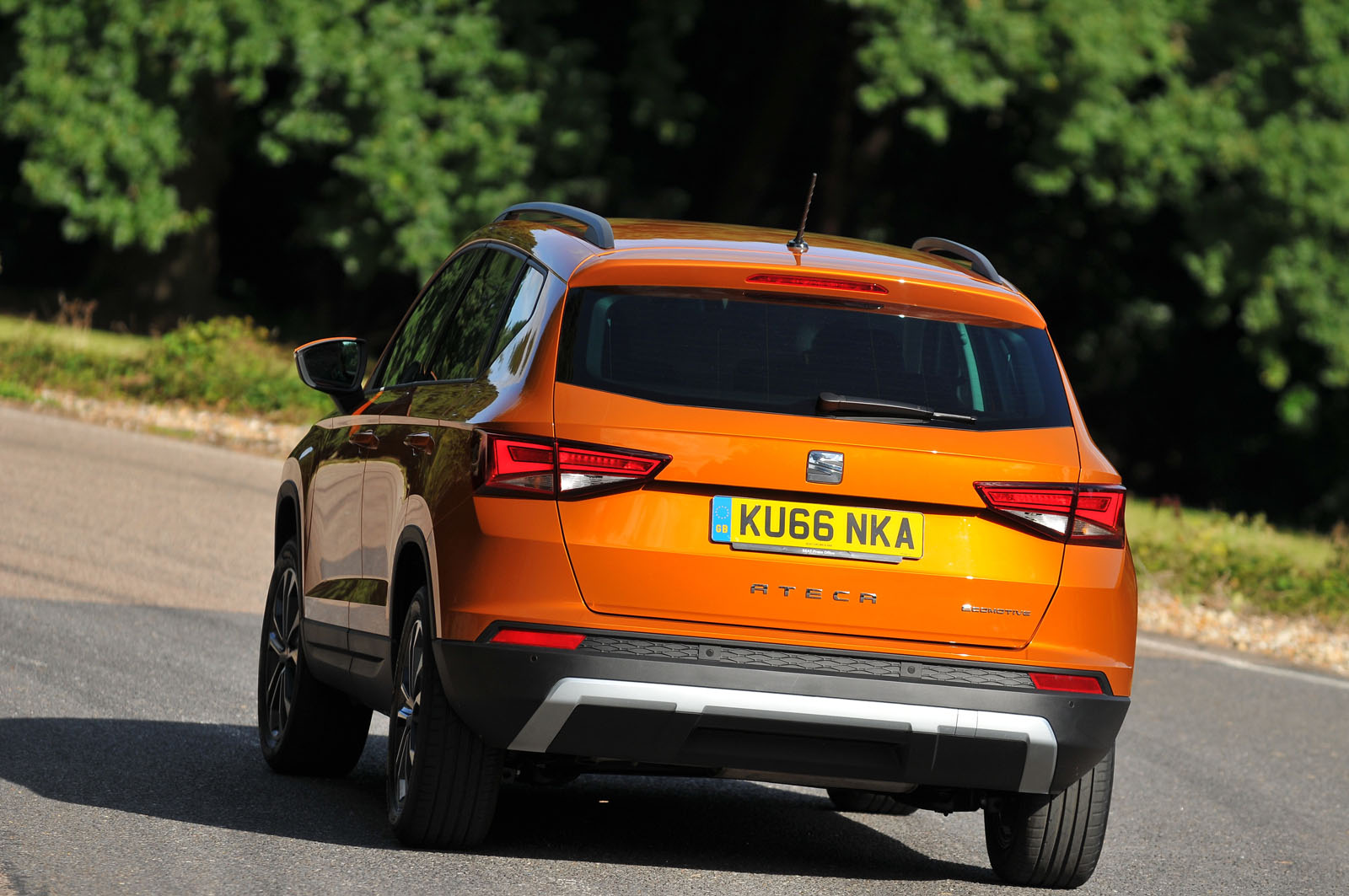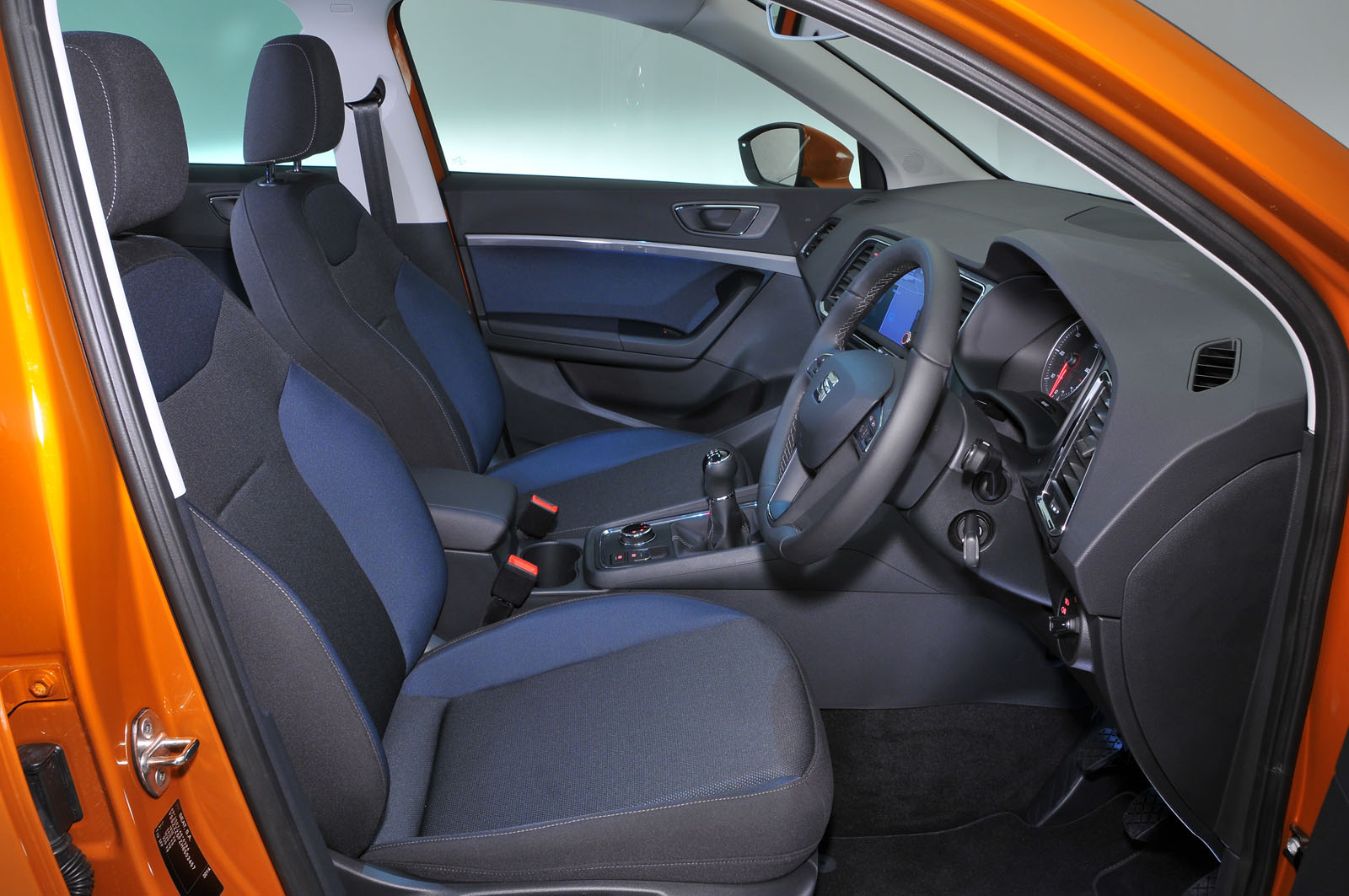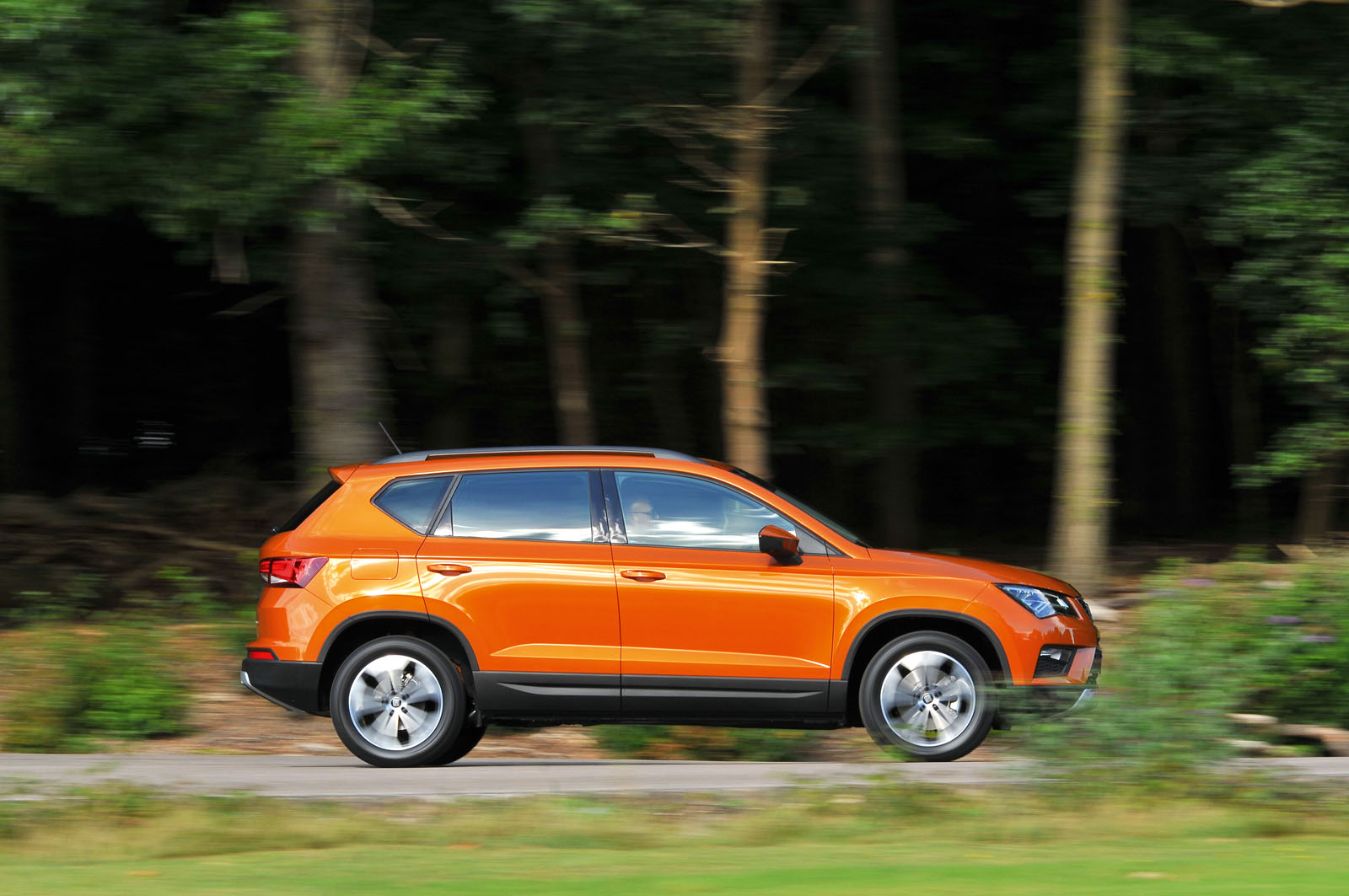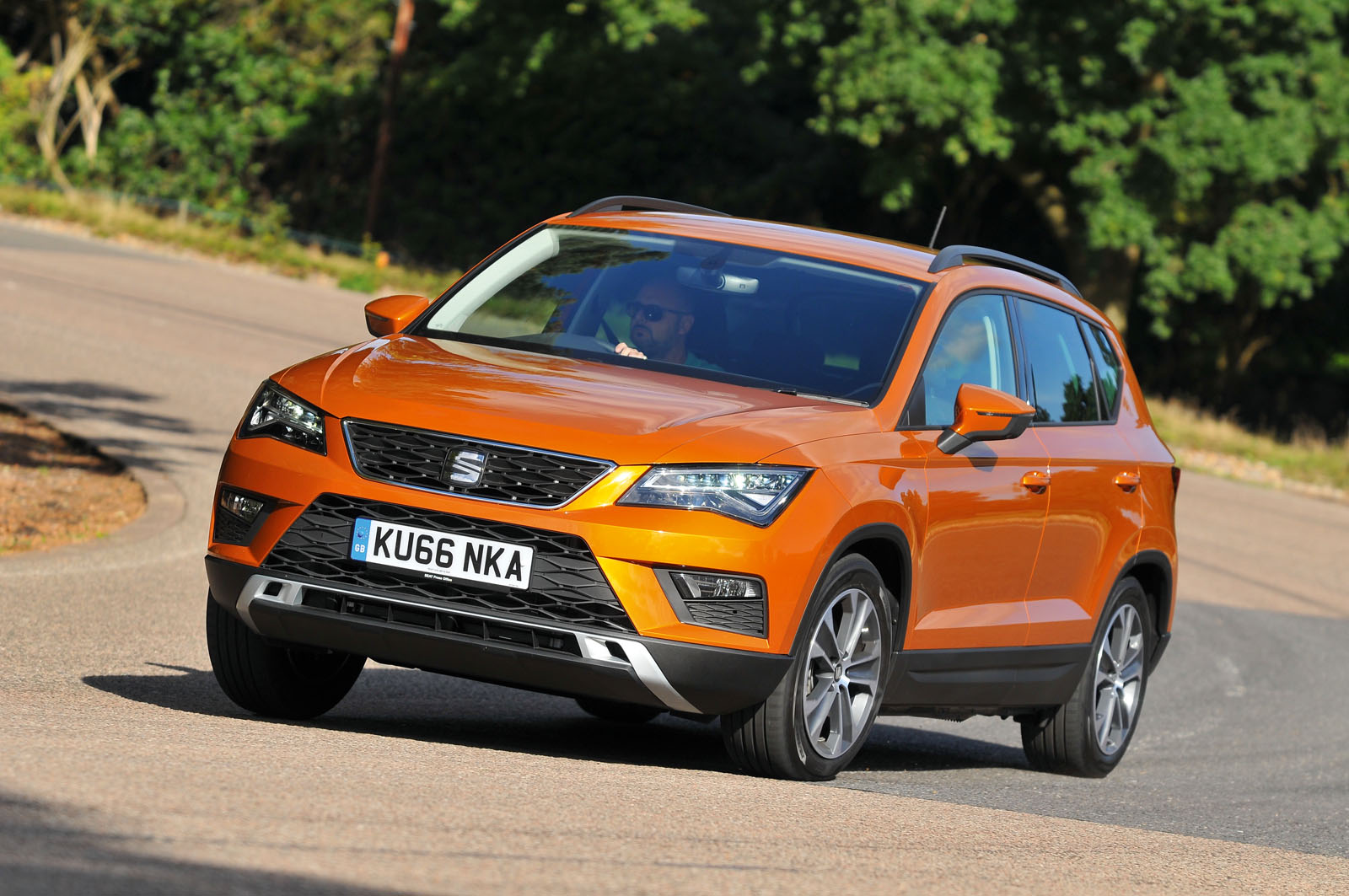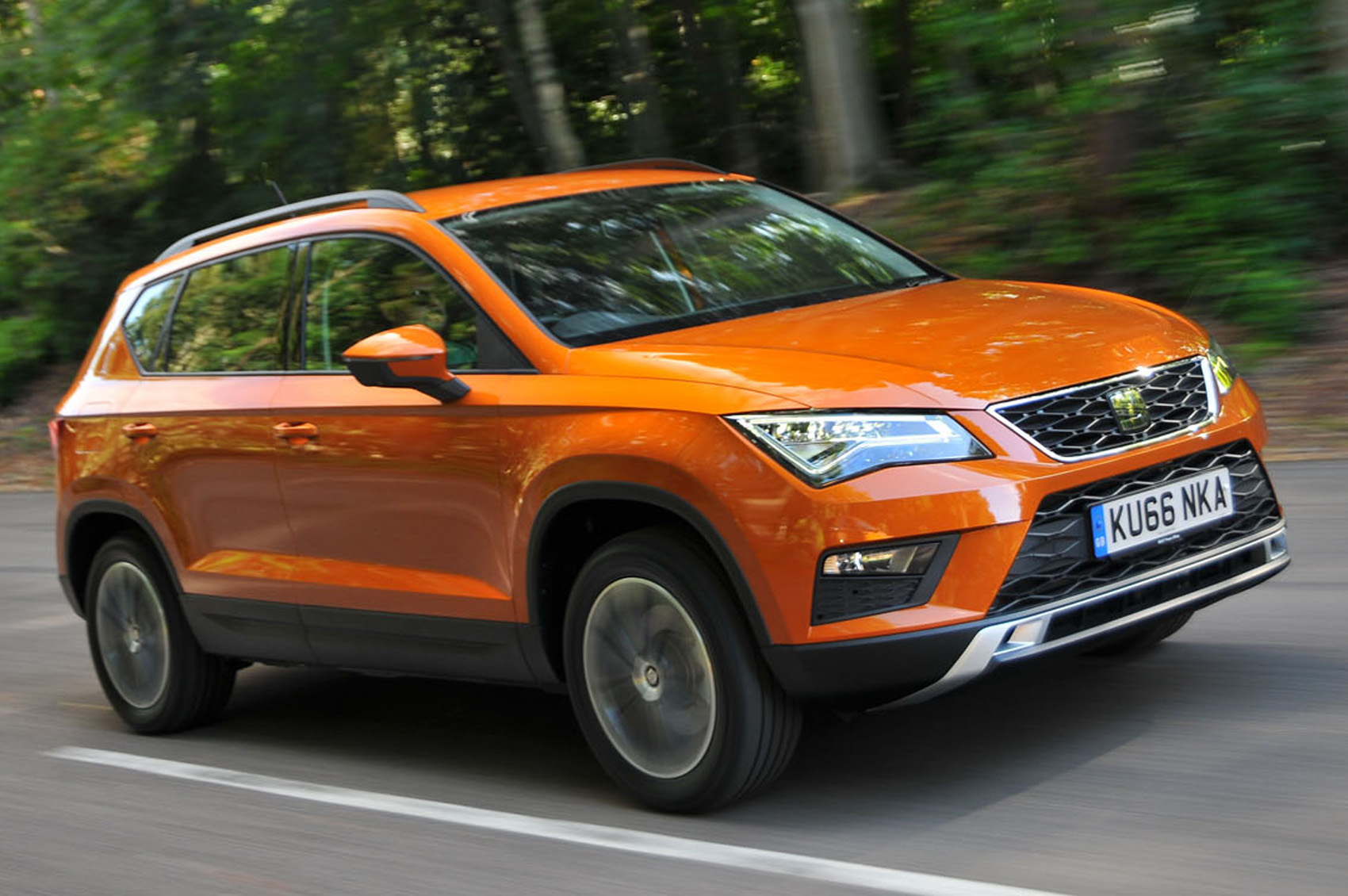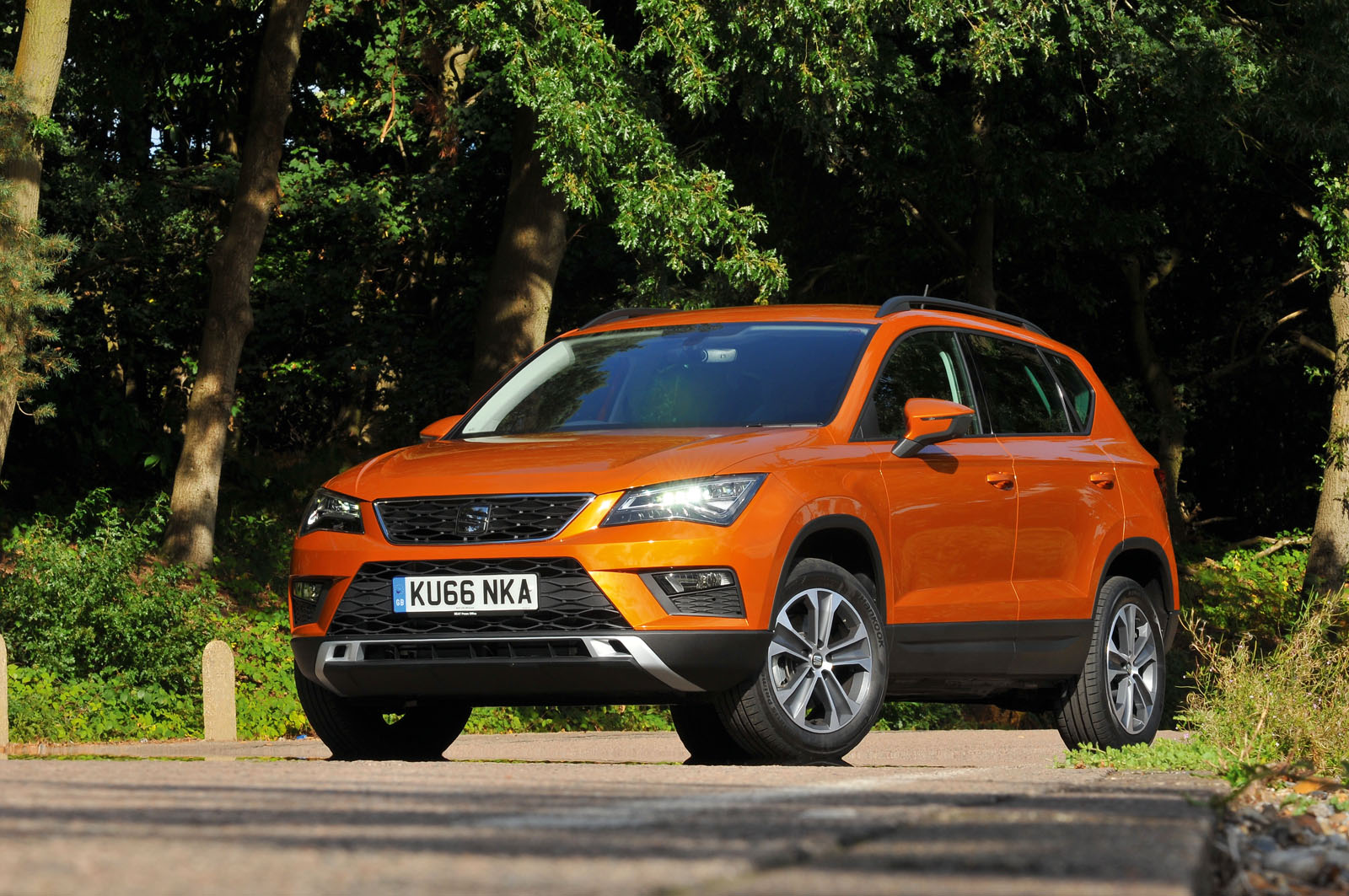The necessary positioning of Seat as a brand has left some of its products feeling short-changed inside.
The Ateca’s slightly starchy, unadorned cabin is much like those of its stablemates – notably the Seat Leon – and explicitly less affluent in appearance than the equivalent Volkswagen.
Nevertheless, while there is precious little to get excited about while looking at the predominantly matt black dashboard, there is nothing significant to grumble about, either.
The Ateca is built in the same Czech factory that turns out the Skoda Superb and Skoda Yeti and inherits a similarly durable build quality. In keeping with most MQB products, everything is where you’d expect to find it and functions impeccably.
Marginal infractions are observable – Seat’s new Drive Profile wheel could do with being a bit less flimsy, for example – but you need to go looking for them.
Generally speaking, with its legibility, ease of use and ergonomics beyond reproach, the Ateca is exceptionally good at making you feel right at home.
It is also acutely well sized. Being slightly shorter in the wheelbase than the Volkswagen Tiguan does not prevent the Ateca from providing ample, family hatchback levels of rear leg room.
The sense of space is amplified further by the amount of rear head room available, with the car’s bearskin-swallowing roofline being what really distinguishes the Ateca’s cabin from the otherwise similar-sized Leon. It is significant enough to be the feature most likely to sway any parents torn between the two.
That and the well-proportioned boot, which, with a 510-litre capacity, is not only 130 litres larger than the Leon’s but also 80 litres more generous than a Qashqai’s.
Seat doesn’t quote a total load capacity, but the near-flat space appears suitably commodious once the 60/40 split seatbacks are flopped forward by the two pull handles in the boot. Storage options elsewhere inside are less impressive (the glovebox is pitifully small) but the larger cubby in the centre console and roomy door bins are decent enough.
In keeping with the rest of the interior, there’s often a nagging feeling that you’re not getting quite as slick an experience from Seat’s menu interface as you would Volkswagen’s, despite the fact that it’s mostly just a retread of the same software.
SE trim has the Media System Plus set-up, meaning it gets the 8.0in colour touchscreen with the proximity sensor that changes the display options depending on how close your hand is.
Voice control, Bluetooth audio streaming and eight speakers are included (all are missing from the 5.0in Touch system that features in entry-level cars) but DAB is not. For that, you’ll either need to fork out an additional £525 for the Navigation system, or else opt for the SE Technology trim, which has it built in to the higher sticker price.
Aside from its cut-price nature, the set-up, which is another modular piece of MQB kit, is a solid piece of tech.
Don’t expect any problems connecting your phone, finding your way about or getting a DAB signal — as long as you’ve paid the premium.
As for trim levels, there are five to choose from: S, SE, SE Technology, FR and Xcellence. Entry-level Atecas get 16in alloy wheels, electrically adjustable wing mirrors, electric windows, hill start control and rear tinted windows as standard on the outside. Inside, there's a leather steering wheel and gear lever, air conditioning, Seat's autonomous braking system and a 5.0in infotainment system with FM radio, USB and Bluetooth connectivity.
Upgrade to SE and you'll find 17in alloy wheels, heated door mirrors, black roof rails, front fog lights, cruise control, dual-zone climate control, rear parking sensors, and Seat's Media System Plus infotainment with an 8.0in touchscreen display, CD player, two additional USB ports, and smartphone integration. Spending a bit extra on SE Technology trim gets you 18in alloys, LED head and fog lights, aluminium roof rails, sat nav and DAB radio.


